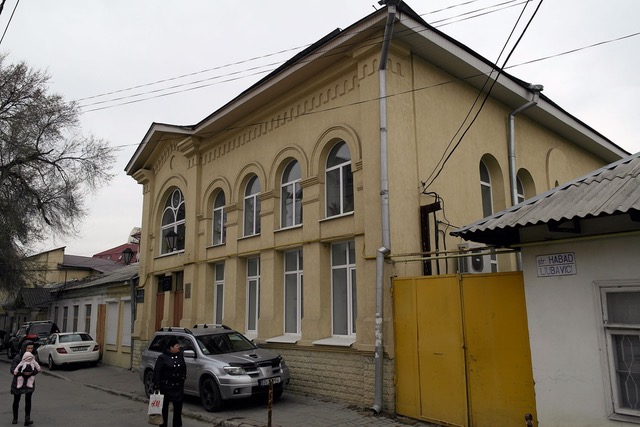There used to be over 60 synagogues in Chişinău, which testified to the city’s vibrant Jewish life. After World War Two, the Soviet authorities allowed Shoah survivors to use only one religious room: the Gleizer Shil, which used to be the synagogue of glaziers and bookbinders. The synagogue is still a center of religious life in Chişinău.
The two-story building was built in 1888. It has been rebuilt several times since then, but it retains most of its original appearance. The building also survived the war unscathed. The interior of the synagogue is dominated by a large place for prayer, with a women’s gallery on three sides and a wooden ceiling.
Apart from the big synagogues, which were open to all believers, there were numerous smaller synagogues and prayer rooms in Chișinău shaping Jewish life until 1940. These synagogues were maintained by guilds, including a synagogue of tailors, of leather tanners, butchers, shoemakers – and even glaziers and bookbinders.
In her interview with Centropa, Ida Voliovich remembers how her family observed Jewish traditions and attended synagogue services in Chişinău:
The synagogue of butchers was located on Izmailskaya Street, where Grandfather Kelman went, not far from where Itl lived, so my father may have met my mother at the synagogue. My grandfather and grandmother went to the synagogue and observed Jewish traditions, followed the kashrut and kept Sabbath. However, business came first with my grandfather, so the family didn’t consider it a sin to sell meat to their customers on Saturday.
Zakhar Benderskiy was born in Chişinău in 1912. He also remembers religious life before World War II in his Centropa interview:
My father’s family was religious. There were several synagogues in Chișinău. The population was multinational, consisting of Moldavians, Romanians, Russians and Jews, who constituted about a quarter of the population. They spoke Yiddish, Russian and Romanian. There was a Jewish theater, Jewish grammar school and Jewish secondary schools. All these were closed after 1940 when the Soviet army entered Bessarabia […]. My grandfather and his sons went to the big synagogue not far from their house. They celebrated Sabbath and all Jewish holidays. My grandfather wore ordinary clothes, but he had a beard and wore a kippah. Before going out he put his hat on top of it.
Since 1990, the Orthodox community of Chabad Chassidim has been registered in the Gleizer Shil, and the street in which the synagogue is located has since then been renamed Chabad Lubavitch Street. Today, the Gleizer Shil is one of three active public synagogues in the city.
